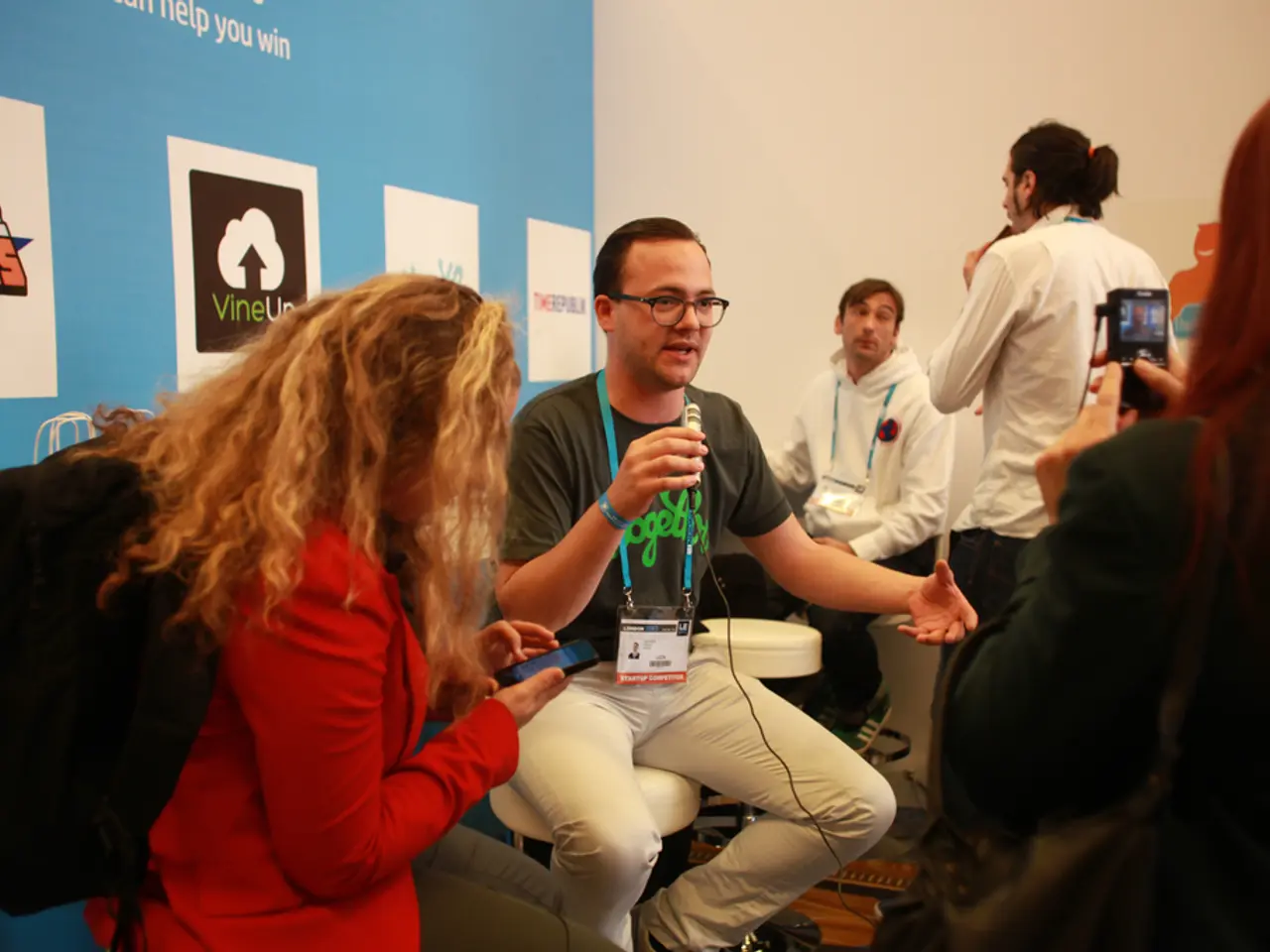Uncovering a deepfake's disguise: can your detection methods succeed or fail in the process?
In the era of remote work, organizations are increasingly relying on technology to streamline their hiring processes. However, this shift towards digital recruitment has opened up new avenues for AI-generated fraud, necessitating a robust and layered approach to screening.
A Layered Approach to Fraud Prevention
To effectively combat AI-generated fraud in remote hiring, a technology-driven approach combined with human oversight is essential. This strategy includes real-time identity verification and continuous authentication, advanced fraud detection tools, deepfake and AI-generated voice/video detection technologies, layered credential verification, ongoing monitoring and analytics, legal and privacy compliance, and cross-referencing sources.
Identity Verification and Continuous Authentication
By implementing real-time identity verification and continuous authentication during all stages of the hiring process, organizations can ensure that the same individual participates in interviews and assessments, preventing deepfake or impersonation attacks.
Advanced Fraud Detection Tools
Advanced fraud detection tools such as device fingerprinting, behavioral pattern analysis, and IP address tracking can identify coordinated fraud attempts and suspicious activities across candidate pipelines.
Deepfake and AI-Generated Detection
Integrating deepfake and AI-generated voice/video detection technologies into video interview platforms, mandated for remote hires, helps identify synthetic or manipulated media used by fraudulent candidates.
Layered Credential Verification
Layered credential verification combines AI-driven checks with human expert review. AI can validate document authenticity and flag discrepancies, while experienced screeners detect nuanced inconsistencies in histories or interview behavior that algorithms might miss.
Ongoing Monitoring and Analytics
Ongoing monitoring and analytics help spot emerging fraud trends, benchmark fraud rates against industry standards, and adjust fraud prevention tactics dynamically.
Legal and Privacy Compliance
Ensuring legal and privacy compliance involves obtaining explicit candidate consent for monitoring, maintaining transparency about fraud detection practices, and documenting decisions to withstand legal scrutiny.
Cross-referencing Sources
Cross-referencing sources such as social media profiles, prior employers, and references with real-time checks helps corroborate candidate identity and background thoroughly.
The Need for Modern Screening Technology
Traditional background checks alone have become insufficient against sophisticated AI-generated fraud that can bypass automated resume filters and forged references. Therefore, combining cutting-edge technical solutions that detect manipulation and synthetic content with trained human oversight and continuous verification throughout remote hiring is critical to maintaining integrity and security.
The Role of Modern Screening Technology
The modern screening process should be designed to work seamlessly for candidates using any device, offer support for non-native English speakers, and accommodate different accessibility needs. The modern screening tools designed well can speed up the process by automatically clearing genuine candidates and flagging only high-risk cases for further review.
Modern screening technology should include liveness detection, biometric facial matching, tamper detection across documents, deepfake identification, and ongoing adaptation to respond to emerging fraud techniques.
The Importance of a Positive Candidate Experience
The screening process is often the first meaningful interaction a candidate has with an organization. A clunky or confusing experience can leave a negative impression. A poor candidate experience during screening can influence the decision to reject a role. Therefore, employers should aim to create a secure, intuitive, mobile-friendly, and inclusive screening process that reflects positively on their culture, reputation, and people.
The Expert's View
Mathew Armstrong, CEO of Giant Screening, a UK-based background screening provider and a trusted partner to some of the country's best-known workplaces, contributes regularly on screening and onboarding standards, compliance, and the candidate experience. Employers have a responsibility to protect their culture, reputation, and people by verifying identity correctly from the very beginning.
The Impact of Generative AI
The rise of generative AI has significantly impacted work, communication, and fraud activities. Fraudsters are utilizing deepfakes, synthetic faces, and tampered documents to infiltrate hiring systems, particularly those that rely on remote or digital onboarding.
Giant Screening, an accredited member of the Professional Background Screening Association (PBSA), is at the forefront of combating these threats, providing organizations with the tools they need to maintain the integrity and security of their hiring processes.
Read also:
- IM Motors reveals extended-range powertrain akin to installing an internal combustion engine in a Tesla Model Y
- Amazon customer duped over Nvidia RTX 5070 Ti purchase: shipped item replaced with suspicious white powder; PC hardware fan deceived, discovers salt instead of GPU core days after receiving defective RTX 5090.
- Hyundai's 2025 IONIQ 9 luxury electric SUV receives a thorough evaluation, highlighting its abundant features and significant cost.
- Annual energy expenditure at the University Science Building slashes by $1.2 million, all the while adhering to environmental safety ventilation standards.




